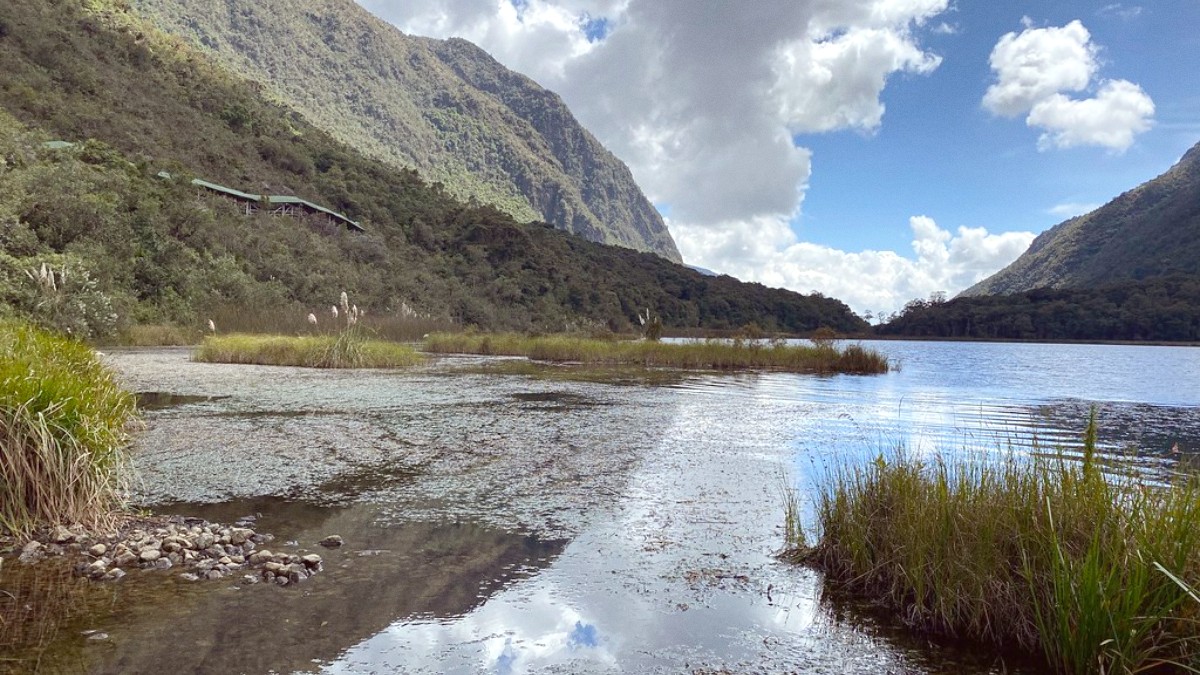
The Southern Highlands, Ecuador
Travelers find a city that feels both grand and intimate, where ornate cathedrals stand beside bustling markets, and quiet courtyards invite a moment of peace. Beyond the stunning buildings, Cuenca welcomes warmly, its pace of life inspiring exploration and discovery. The city’s charm lies in its harmonious blend of old-world elegance and modern amenities, all set against a backdrop of rolling Andean hills.
Cuenca is in the southern highlands of Ecuador, approximately 2,560 meters (8,400 feet) above sea level. This high-altitude location gives the city its renowned temperate climate, often called "eternal spring."
Four rivers—the Tomebamba, Yanuncay, Tarqui, and Machángara—meander through the city, adding to its picturesque setting and natural green spaces along their banks. The surrounding landscape features the dramatic paramo ecosystem of Cajas National Park to the west, with its hundreds of glacial lakes, and fertile valleys to the east that host traditional artisan towns.
Cuenca's history stretches back long before the Spanish arrived. The Cañari people first settled this valley, calling it Guapondelig, a thriving hub of their civilization. Later, the Inca Empire conquered the Cañari and established Tomebamba, believed to be a grand northern capital matching the splendor of Cusco. This Inca city was a significant administrative and religious center.
When the Spanish arrived in the 16th century, they found the city in ruins. On April 12, 1557, the Spanish founded "Santa Ana de los Cuatro Ríos de Cuenca," building their colonial city directly atop the Inca foundations. During the colonial era, Cuenca grew as an agricultural and artisan center. Its relative isolation in the highlands preserved its colonial architecture and traditions, a factor in its UNESCO designation in 1999. Today, this rich history is evident in every plaza, church, and museum, giving visitors a tangible connection to the past.
Home of the Cañari civilization, a thriving pre-Columbian hub.
Northern capital of the Inca Empire, rivaling Cusco in grandeur.
"Santa Ana de los Cuatro Ríos de Cuenca" established on Inca ruins.
Developed as an agricultural and artisan center.
Historic center honored for its well-preserved colonial character.
Cuenca, with its friendly atmosphere and welcoming vibe, a comfortable travel experience awaits. The city thrives on its artisan traditions, producing world-renowned Panama hats, intricate jewelry, and beautiful ceramics.
Its culinary scene presents hearty Andean dishes alongside international flavors. Transportation within the city is straightforward, with a reliable bus system, a modern tram, and readily available taxis. Accommodations range from budget-friendly hostels to luxurious boutique hotels housed in historic mansions. Whether exploring ancient ruins, hiking in high-altitude parks, or simply enjoying a coffee in a colonial plaza, Cuenca invites you to immerse yourself in its distinctive charm. This guide details practical advice and recommendations for maximizing your journey.
Cuenca is famed for its rich artisan traditions, including the creation of authentic Panama hats, intricate gold and silver jewelry, and ceramics, a testament to its cultural heritage.
The city's food scene features traditional Andean dishes like hornado and cuy, alongside a growing array of international restaurants and cozy cafes for every palate.
Cuenca: A blend of old-world charm, modern convenience, and natural beauty. Prepare for a memorable journey.
This section covers important details for planning your visit, from ideal travel times to essential safety measures, setting the foundation for a smooth and pleasant journey.
Cuenca’s "eternal spring" climate welcomes visitors year-round, with dry and wet seasons influencing outdoor activities.
Most nationalities enter without a visa for short stays; a valid passport and onward ticket typically suffice.
Ecuador uses the USD. Costs vary, but local food and transport can significantly lower daily expenses.
Being prepared for common concerns makes a difference. This section details health precautions and safety tips for a secure journey.